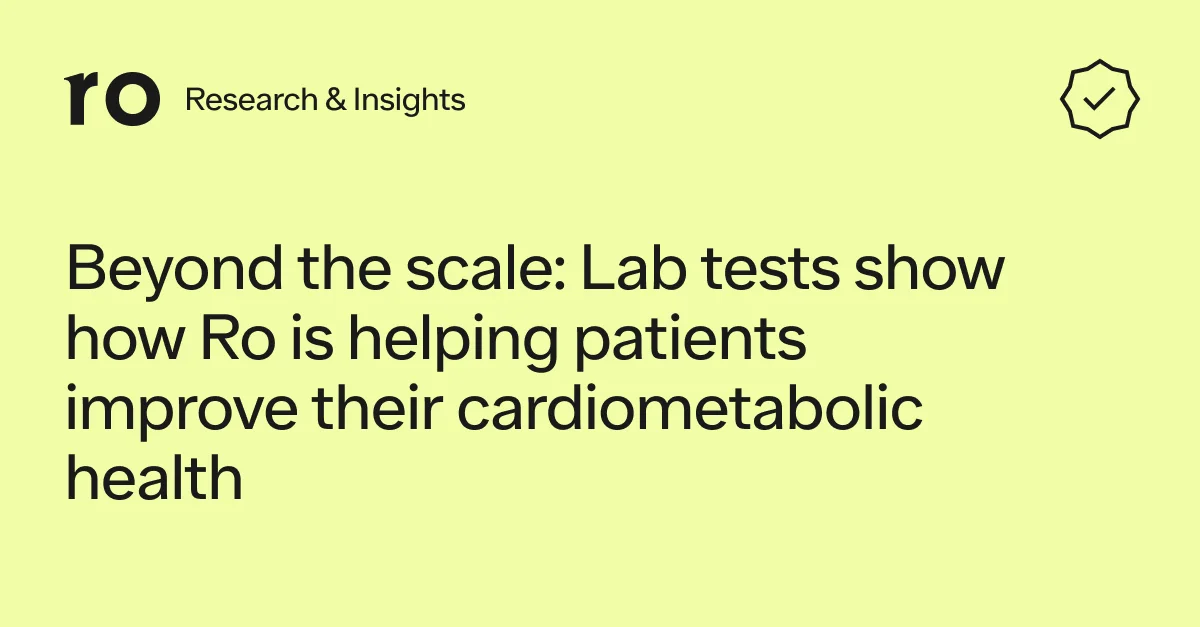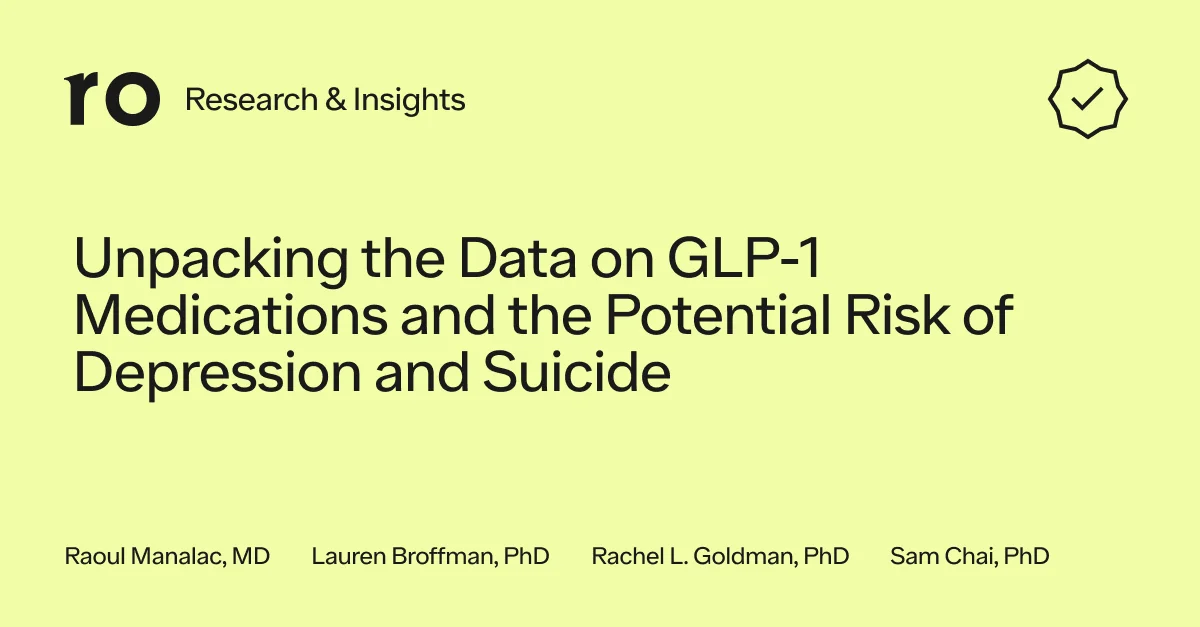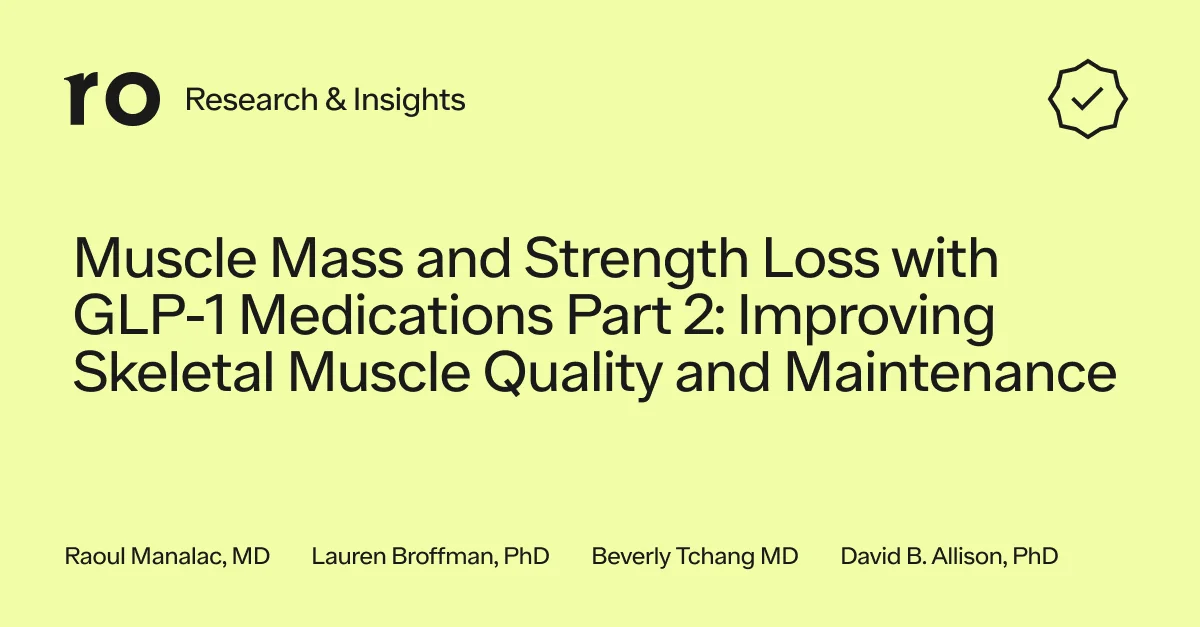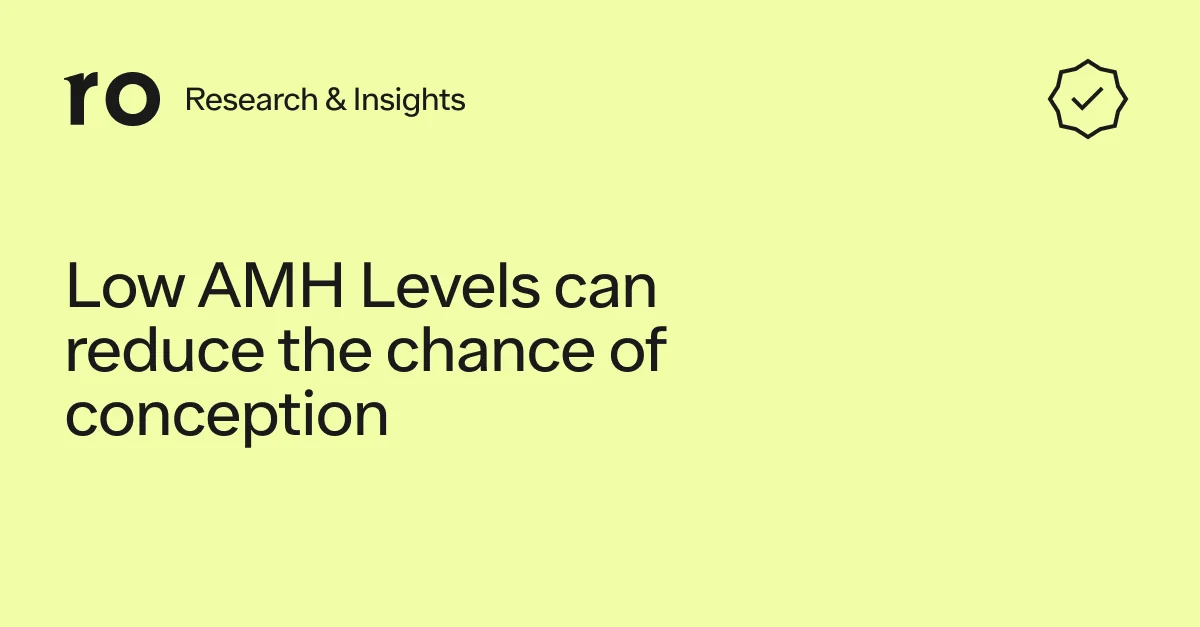Here's what we'll cover
Here's what we'll cover

Ro’s aim is to empower people with the information they need to navigate their fertility journey — whether their goal is to have kids now or in the far-off future. To support this, Ro’s clinical research team set out to help close an important gap in fertility research.
You may have heard about AMH, or anti-Müllerian hormone — it’s the best hormonal marker for ovarian reserve. This is important because ovarian reserve, the measure of the amount of eggs in the ovaries, is an important predictor of the length of someone’s reproductive window and the response to ovarian stimulation used in egg freezing and IVF.
Why we conducted our research
Fertility hormone testing is becoming more commonplace, including among people who use different types of hormonal birth control. Previous research has shown that hormonal birth control can impact AMH levels, but previous studies were small, and only focused on a few types. Despite this, as it stands today, anyone who tests AMH while on hormonal birth control has their result interpreted as if they weren’t on birth control at all.
That’s why we set out to go deeper, conducting the largest study of its kind comparingAMH levels among people using and not using hormonal birth control to help find better ways to interpret AMH levels for these patients.
What we learned
Our research — which was published in the Journal of Fertility and Sterility — made a few important discoveries to help us better understand how hormonal birth control impacts AMH. Read the full study here.
1. On average, AMH levels were lower in people who are using the pill (both combined contraceptive pill and the progestin-only pill), the ring, and the implant compared to age-matched people not using birth control. However, AMH levels were not lower in people using the hormonal or copper IUDs.
When compared to people not on the pill, AMH levels were 17% lower for people on the combined birth control pill and 0% lower for people using the hormonal IUD.
2. The impact of birth control is consistent across ages. It did not matter if a patient was 40 or 20 years old, AMH levels were lower on average if patients were using the pill, implant, or ring.
3. Among people the same age, birth control impacted AMH differently depending on how high (90th percentile) or low (10th percentile) AMH levels were.
Compared to people not using birth control, AMH was 32% lower at the 10th percentile, but only 5% lower at the 90th percentile for people on the combined oral birth control pill.
By specifying normal vs abnormal AMH levels when accounting for hormonal birth control use, we can now give people a more accurate interpretation of their AMH result — without asking them to stop taking the pill or removing their implant or ring.
“This research further defines the relationship between hormonal birth control and tests of ovarian reserve. Individuals using hormonal birth control now have a better understanding when they take tests that measure reproductive potential.” — Nataki Douglas, MD, PhD, Chair of Modern Fertility’s Medical Advisory Board
Considerations
As the first AMH reference range for patients who are on hormonal birth control, these findings can give clinicians insights that help them better interpret AMH levels and counsel their patients on their individual results.
This study highlights the role that large, population-based cohorts can play in advancing scientific knowledge, and the role of industry in enabling these studies. With a better understanding of how hormonal birth control can impact AMH, patients can partner with their healthcare provider — with the right information in hand — to better plan for their futures.









